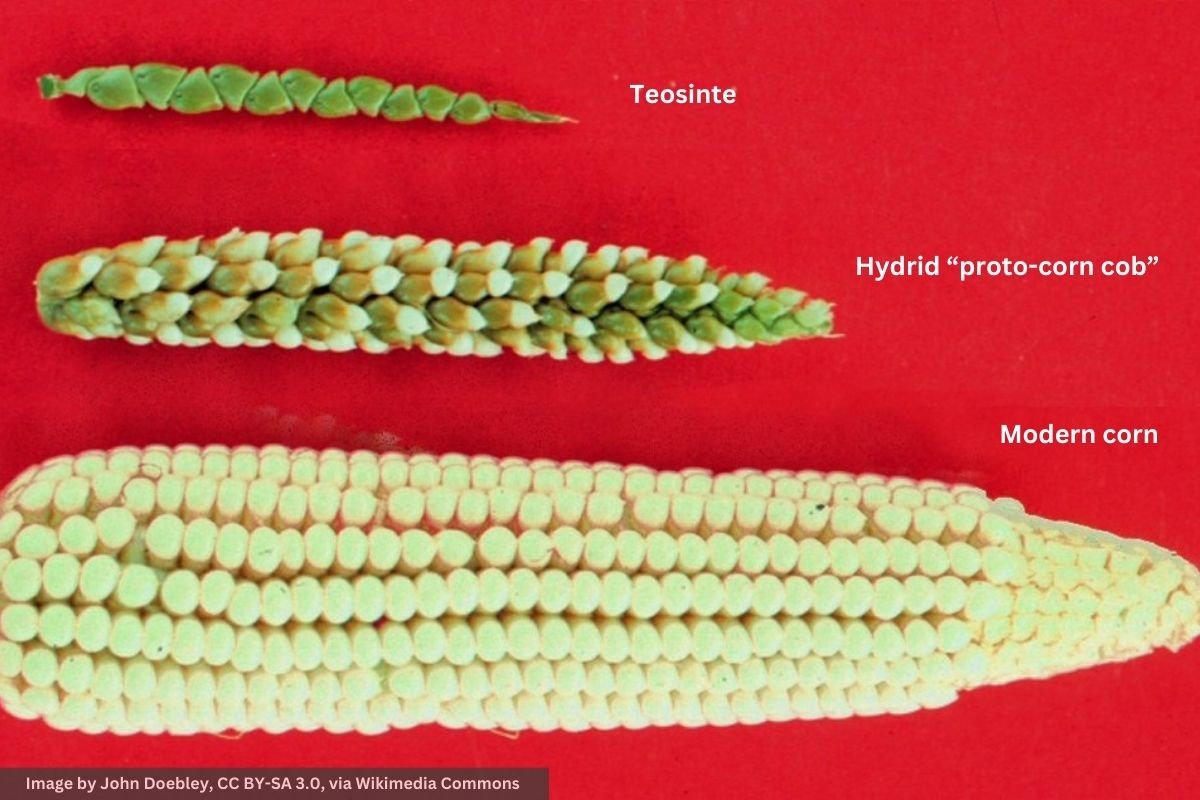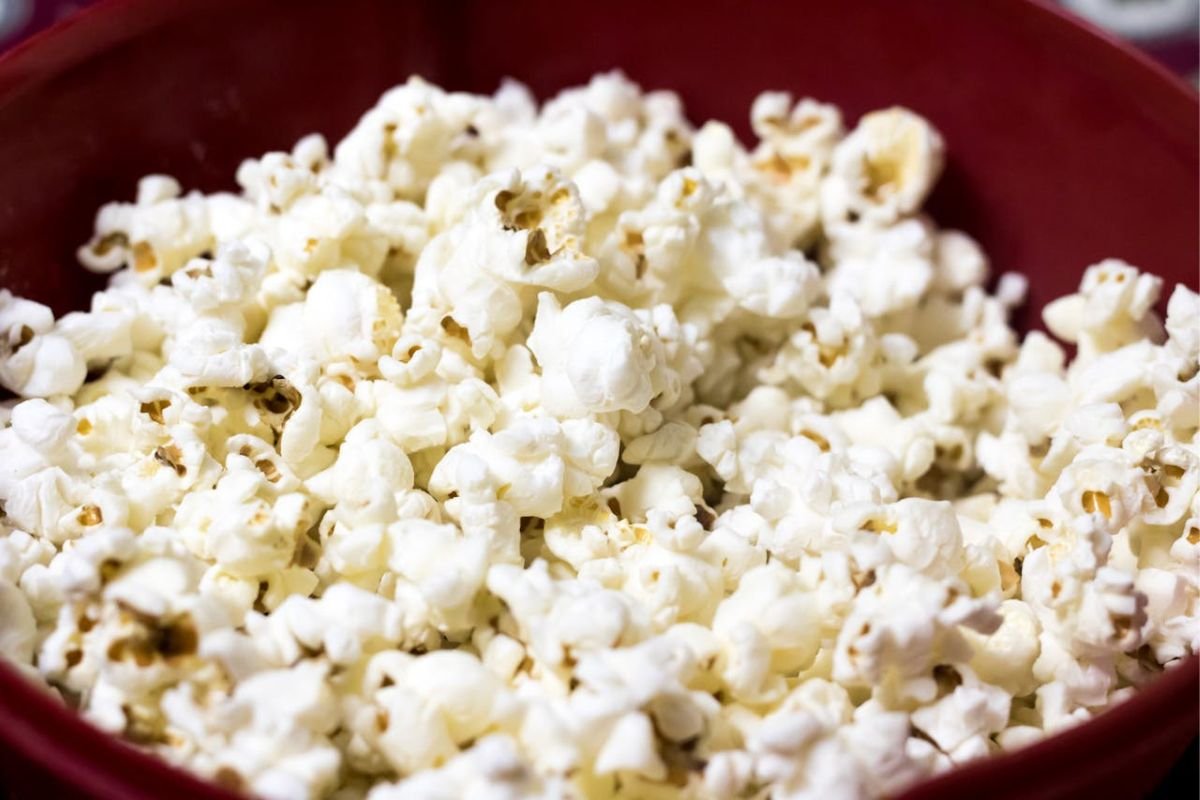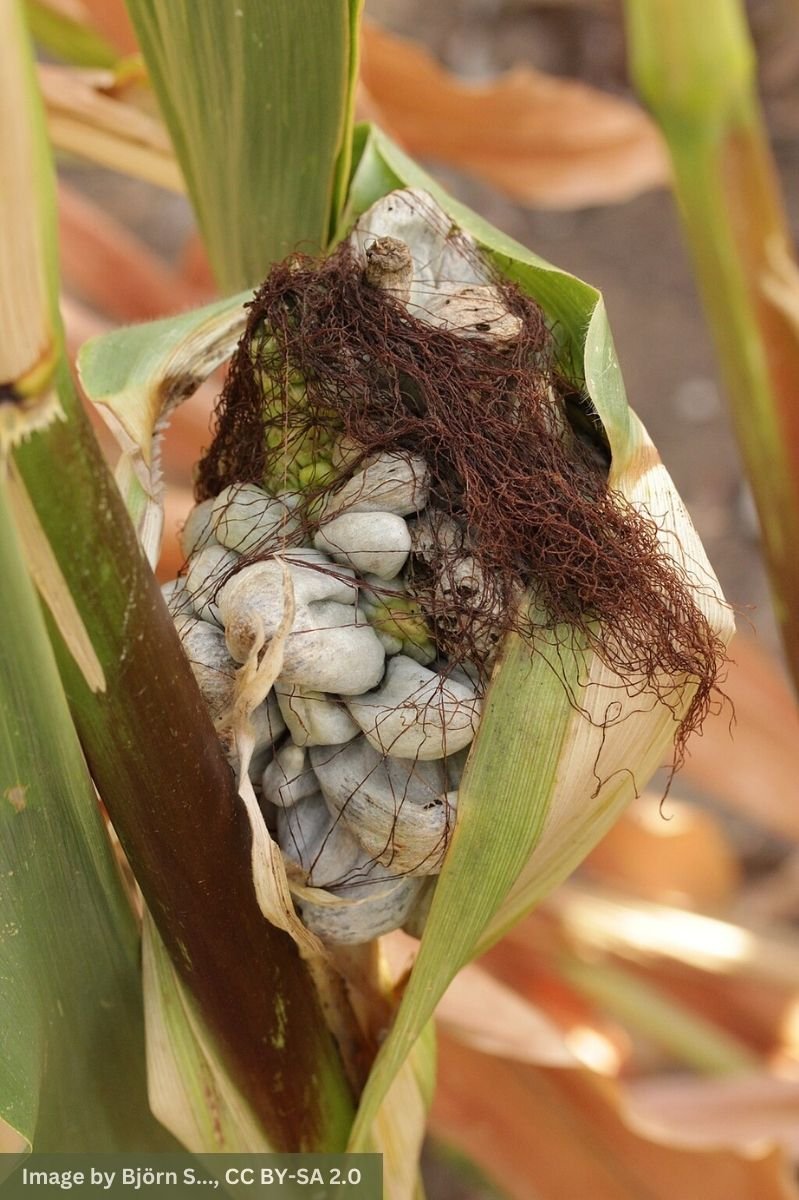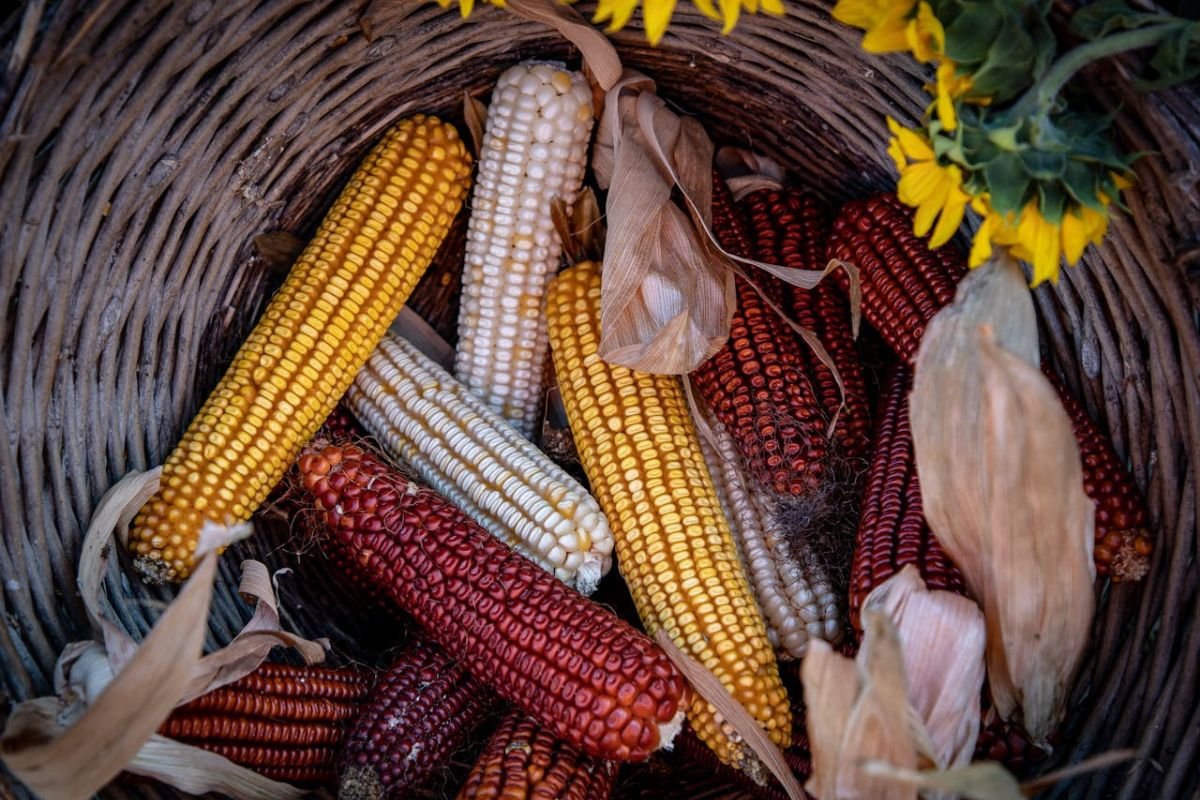The Corn Story: Its Remarkable Journey, Cultural Legacy, and Global Impact

27 MAY 2025
From Wild Grass to Global Icon: The Story of Corn
Today, let’s dive into the extraordinary tale of corn, one of humanity’s most remarkable agricultural achievements. What makes corn so special? For starters, it’s incredibly good at its job: feeding the world. Alongside sugarcane, corn is a global agricultural powerhouse and a shining example of human ingenuity.
Here’s the twist: corn, as we know it, can’t survive on its own. Left untended in the wild, it wouldn’t last. Unlike other plants, corn relies entirely on human care for survival, it has no natural way to spread its seeds. This unusual dependency left scientists scratching their heads for years. How did such a crop come to be? And how did its ancestors survive without human intervention?
Some of the theories were wild, literally. One even suggested that corn was a gift from aliens, an otherworldly crop brought to Earth. While that idea sounds like the plot of a sci-fi movie, the truth is even more astonishing. Corn’s origins trace back thousands of years to a wild Mexican grass called teosinte. Ancient farmers, through years of careful cultivation, turned this modest grass into the vibrant, productive corn we know today.
Isn’t it amazing to think that every cornfield we see today is the result of a partnership between humans and nature? Corn’s story is a powerful reminder of how innovation, patience, and curiosity can transform the simplest beginnings into life-changing staples.
The Surprising Complexities of Corn Nutrition
Corn may be a global staple, but its nutritional benefits depend on how it’s prepared. Did you know that eating corn without proper preparation can lead to serious health issues? History provides a cautionary tale.
Lessons from Pellagra Outbreaks
In the 18th and 19th centuries, pellagra, a disease causing skin rashes, diarrhoea, and mental decline, swept through communities that relied heavily on corn as their main food source. The problem? Corn doesn’t naturally offer niacin (vitamin B3) in a form the human body can easily use. Ancient cultures, however, discovered a life-saving preparation technique. By treating corn with an alkaline solution, such as limewater, they unlocked its nutritional potential, preventing pellagra and improving its digestibility.
A Crop That Touches Every Corner of Life
Corn is more than food, it’s an innovation in versatility. At mealtimes, it appears as roasted corn, steamed corn, popcorn, or baby corn in stir-fries. Some cuisines even feature corn truffles, a rare fungus prized for its unique taste. But corn’s story doesn’t end at the dinner table.
Corn plays a starring role in renewable energy through ethanol production, offering an alternative to fossil fuels. It’s also a hidden hero in countless products, from cosmetics to biodegradable plastics. Processed foods are often loaded with corn derivatives like high-fructose corn syrup, highlighting how integrated this crop is in daily life.
From nutrition and culinary innovation to industrial uses and environmental impact, corn is far more than an ordinary crop. As we continue, we’ll delve even deeper into how this humble plant has reshaped the world.
Turning Cats into Tigers: The Unbelievable Evolution of Corn
What do corn and sugarcane have in common? Both belong to the Poaceae family, making them part of the grass family. Despite their impressive stature and resilience, they’re essentially giant grasses. But corn’s story takes an unexpected twist, it’s the only member of its family that can’t survive in the wild without human help.
Why Can’t Corn Survive Alone?
Unlike wheat, which scatters its seeds naturally to thrive independently, corn is entirely dependent on us. Its seeds are tightly packed on the cob and protected by husks, unable to detach or spread on their own. Without human intervention, peeling back husks, removing kernels, and planting them, corn simply wouldn’t exist.
This unusual reliance has led to some imaginative theories, including the idea that corn is an alien plant gifted to Earth. While entertaining, the reality is even more astonishing: humans transformed this plant through careful domestication over thousands of years.
A Parallel to Silkworm Domestication
Corn’s dependence on humans is similar to the silkworm’s. Silkworms, the only fully domesticated insect, rely entirely on human cultivation to survive. Like the silkworm, corn’s transformation was driven by early agricultural ingenuity, beginning with its ancestor, a wild grass called teosinte.
Tracing Corn’s Roots to Teosinte
Teosinte, still found in Central America, looks nothing like modern corn. Its seed head is tiny, with a handful of tough kernels. But in the 1930s, researchers like Dr. Nikolai Vavilov and Dr. George Beadle uncovered their connection. Beadle’s Nobel Prize-winning research showed that corn and teosinte share nearly identical chromosomes and can even hybridise to produce offspring, a kind of “proto-corn cob”, a living link between the two.

From Grass to Global Staple
The transformation from teosinte to today’s corn is extraordinary. Modern corn has hundreds of soft kernels tightly packed onto a cob that dwarfs teosinte’s tiny seed head. It’s like comparing a kitten to a tiger, connected by genetics but worlds apart in appearance and utility.
Corn’s story isn’t just about evolution; it’s about the incredible power of human innovation to shape the natural world.
From Pebbles to Plump Kernels: How Corn Became the Crop We Know Today
Have you ever wondered how ancient humans turned something so unappetising into one of the world’s most important crops? Teosinte, the wild ancestor of corn, looked anything but edible. Its seeds were small, encased in hard shells resembling pebbles, not exactly a snack you’d reach for. Contrast that with modern corn: plump, soft kernels wrapped in a delicate husk, practically inviting you to take a bite. When it comes to both quantity and quality, corn’s seeds are miles ahead of their humble origins.
From Scraggly Grass to Sturdy Stalks
The plants themselves tell an equally amazing story. Teosinte grows as a scraggly bunch of thin, branched stalks, while modern corn stands tall with a single thick stalk that supports large, nutrient-rich ears (the term “ear” refers to the part of the corn plant where the kernels grow, often resembling a “head” of grain). The transformation is so striking that early scientists struggled to believe the two were related. But as the saying goes, ‘DNA doesn’t lie.’

Cracking the Genetic Code
Professor John Doebley and his team dedicated over 20 years to proving the genetic link between teosinte and corn. In 2002, their research confirmed what scientists like Dr. George Beadle had long suspected: corn was domesticated from teosinte. Despite their differences, both belong to the same species, Zea mays subspecies parviglumis, and can even hybridise to produce viable offspring.
A 9,000-Year Journey of Innovation
The domestication of corn started around 9,000 years ago in the Balsas River Valley of Mexico. Indigenous farmers carefully selected and cultivated teosinte plants with desirable traits, transforming them over millennia. Archaeological discoveries, including 5,000-year-old “proto-corn cobs” found by Richard MacNeish, provide tangible evidence of this incredible journey.
But Why Teosinte?
Here’s the real puzzle: why would ancient humans bother with teosinte, a plant that didn’t look particularly promising? The answer lies in their ingenuity and perseverance, setting the stage for the next fascinating chapter of corn’s story.
Popcorn: The Surprising Catalyst for Cultivation
Picture this: thousands of years ago, a fire crackles, and seeds from an ordinary-looking plant are tossed into the flames. Suddenly, they burst open, revealing something fluffy and edible. This unexpected moment might have been how ancient humans discovered teosinte’s hidden potential.

George Beadle, a pioneering geneticist, tested this idea by heating teosinte seeds to see if they would pop. Sure enough, they did! Creating something remarkably similar to modern popcorn. Beadle hypothesised that this discovery could have piqued the curiosity of early humans, inspiring them to cultivate teosinte.
Who would have thought that popcorn might be the spark for one of humanity’s greatest agricultural achievements?
Sweet Stalks: The Hidden Treasure
Popcorn isn’t the only reason teosinte caught ancient humans’ attention. Another possibility lies in its stalks. Like its cousin sugarcane, teosinte has sweet, juicy stalks, a trait that likely made it an attractive energy source. Early farmers might have initially cultivated teosinte for its sweet stalks, not its seeds.
As they continued to grow and observe the plant, they may have noticed occasional plants with larger or softer seeds. Over time, through careful selection and cultivation, these traits were enhanced, eventually transforming teosinte into the versatile corn we know today.
Beyond Its Tropical Roots: Corn’s Global Expansion
Corn’s origin in the tropical Balsas River Valley is well-documented, but how did it become a crop that thrives in such diverse climates? From the northern reaches of Canada to the southern tips of Argentina, corn’s adaptability is nothing short of extraordinary. What enabled this tropical plant to conquer such a wide range of environments? That’s a story worth exploring.
Corn’s Genetic Advantage: The Secret Ingredient for Success
In 2023, scientists uncovered another layer of corn’s evolutionary success story. Research published in Science revealed that modern corn owes part of its adaptability to an unexpected genetic contributor: Zea mays subspecies mexicana, or “Mexican teosinte.”
Why Mexicana Matters
Unlike its tropical counterpart Zea mays subspecies parviglumis, mexicana is native to the cooler, high-altitude regions of Mexico. This trait gave it an edge in surviving harsher climates. According to the study, around 10–20% of corn’s DNA comes from mexicana, which likely endowed it with the resilience needed to grow far beyond its tropical roots.
Think of it like inheriting a beneficial gene from a distant ancestor. Just as humans carry Neanderthal DNA to help adapt to challenging environments, corn inherited cold-weather traits from mexicana. This infusion of genetic diversity allowed corn to spread from tropical valleys to temperate fields worldwide.
Corn and Civilisation: A Crop That Built Empires
Corn didn’t just feed people; it fuelled civilisations. For the Olmec, Maya, Inca, and Aztec cultures, maize was the foundation of life. It symbolised sustenance, spirituality, and stability.
In Mayan mythology, humans were created from cornmeal mixed with water, underscoring the crop’s centrality to their identity. The Maya even called themselves the “people of corn.” Across the Americas, maize underpinned trade networks, economies, and rituals, uniting societies in a shared agricultural success story.
A World Transformed by Corn
When Christopher Columbus arrived in the Americas, corn began its journey across the globe. In less than 500 years, its adaptability allowed it to become one of the world’s most important crops. From feeding populations to powering industries, corn’s impact is unparalleled.
But its global rise wasn’t without challenges. Europeans consuming corn on a large scale encountered an unexpected health crisis. What caused this? And was corn really to blame? Let’s unravel the mystery in the next chapter.
Corn’s Rise in Europe: A Double-Edged Sword
When Europeans brought corn back from the Americas, it was nothing short of a farming revolution. This versatile crop quickly gained popularity for its ability to grow in diverse climates while producing high yields. In many regions, it became the cornerstone of agricultural systems and dietary habits.
But this newfound reliance on corn came at a cost no one could have predicted.
The Mysterious Epidemic: What Was Pellagra?
By the 18th century, a strange illness began to emerge in regions where corn was a staple food. Known as pellagra, it caused a cascade of symptoms: painful dermatitis, relentless diarrhoea, memory-erasing dementia, and crippling insomnia. Tragically, many cases ended in death.
At first, pellagra seemed like an isolated issue. But by the late 19th and early 20th centuries, it had grown into a public health crisis, especially in Europe and the United States. In a mere 30 years, over 3 million cases were documented, and the death toll exceeded 100,000.

The panic was intense. Was corn itself to blame? Many believed so. Theories of chronic toxins and hidden dangers in corn seemed plausible at the time, even among scientists.
The Central American Mystery
Yet one crucial observation didn’t fit the theory. In Central America, corn had been a dietary staple for centuries, yet Indigenous communities rarely, if ever, suffered from pellagra. How could this be?
Researchers began to study these populations closely, combing through their traditional practices for clues. Their findings would eventually rewrite the story of corn and nutrition.
The Niacin Mystery: Why Pellagra Struck Some but Not Others
It was a puzzling question: why did heavy reliance on corn cause pellagra in some populations but not others? The answer lay hidden in the chemistry of the grain and the culinary traditions of its earliest cultivators.
A Hidden Problem: Niacin Deficiency
Pellagra was ultimately traced to a deficiency in niacin, also known as vitamin B3. While corn does contain niacin, the nutrient is bound in a complex form that the human body cannot easily absorb. Populations that relied on corn as a staple food, especially those with limited dietary variety, were vulnerable to this hidden nutritional gap.
Once scientists understood this connection, public health measures like niacin supplementation and promoting dietary diversity helped drastically reduce cases of pellagra. For modern consumers, corn is perfectly safe when included in a balanced diet.
But this raised another question: why didn’t the Indigenous peoples of the Americas, who relied heavily on corn for centuries, suffer the same fate?
The Genius of Nixtamalization
The answer lies in a brilliant culinary technique perfected by Indigenous peoples: nixtamalization. This process involved boiling corn in an alkaline solution, such as lime water (calcium hydroxide) or lye derived from wood ash.
Though primarily intended to soften the kernels for grinding and enhance their flavour, this method unlocked a critical nutritional benefit: it converted niacin into a bioavailable form that the human body could absorb.
Thanks to this ingenious process, Indigenous populations avoided pellagra despite their heavy reliance on corn. It was a subtle yet transformative innovation that Europeans overlooked when they introduced corn into their diets.
Restoring Corn’s Reputation
Understanding the role of nixtamalization cleared corn’s name. It wasn’t inherently “toxic”, the problem stemmed from preparation methods that didn’t account for its unique nutritional properties. Today, with proper dietary practices, corn continues to thrive as a cornerstone of global agriculture.
So, what becomes of the staggering 1.2 billion tons of corn produced each year? Let’s take a closer look!
Corn: A Crop of Many Roles

The King of Feed: Corn and Livestock Nutrition
While corn is celebrated as a staple food crop, most of its global production serves a different purpose: feeding livestock. Around 60–70% of the world’s corn harvest is dedicated to poultry, cattle, and other animals, earning corn the fitting title of the “King of Feed.”
This use indirectly nourishes people through the production of meat, milk, and eggs from livestock raised on corn-based diets. Corn’s nutritional value and digestibility make it an unparalleled resource in modern agriculture.
But the versatility of corn doesn’t stop at the kernel. Its stalks, leaves, and cobs are equally valuable. Corn stalks, for instance, are widely used as dried fodder, fresh feed, or silage (a fermented, nutrient-rich forage for animals). Due to their high-quality nutrition, corn stalks often outperform residues from other crops, further enhancing their agricultural significance.
It’s fascinating to think that the ancient farmers who first domesticated corn thousands of years ago couldn’t have imagined the monumental role it would play in livestock farming today.
Corn and Ethanol: Fueling a Cleaner Future
Beyond its critical role in animal agriculture, corn has become a cornerstone of the renewable energy sector. It plays a starring role in ethanol production, a renewable fuel often blended with gasoline to reduce carbon emissions and lessen dependence on fossil fuels. Ethanol blends like E10 (10% ethanol) and E15 (15% ethanol) are now standard in many countries.
In the United States, the world’s largest corn producer, approximately 40% of the corn crop is dedicated to ethanol production. This underscores corn’s importance as both an agricultural and energy powerhouse.
However, this dual role in food and energy raises important ethical and practical questions. Critics of corn-based ethanol production argue that dedicating vast farmland to fuel rather than food could impact global food availability and inflate prices. This “food versus fuel” debate highlights the delicate balance between fulfilling energy demands and ensuring food security.
Finding sustainable, innovative solutions to this issue is a challenge for modern agriculture and energy industries alike. As the world transitions toward greener practices, corn remains a key player in shaping a more sustainable future.
Corn’s Journey to Our Plates
From Cob to Industry: Corn’s Transformations
While we often picture corn as fresh, golden kernels on the cob, much of its culinary journey involves transformation. One of the most prevalent uses of corn is in corn starch, a key ingredient in a wide range of products, from thickening sauces to making baked goods fluffy.
Another major player in the corn-derived lineup is high-fructose corn syrup (HFCS), a sweetener that has become a staple in processed foods, snacks, and beverages. HFCS is not only sweeter than traditional sugar (sucrose) but also cost-effective, which explains its widespread adoption in the food industry.
However, HFCS hasn’t escaped scrutiny. Unlike sucrose, which is metabolised in various tissues, fructose from HFCS is primarily processed in the liver. This unique metabolic pathway can lead to increased fat production and a reduced sense of fullness, encouraging overeating. Over time, this can contribute to weight gain, obesity, and type 2 diabetes.
The introduction of HFCS in the 1970s has been linked by some studies to the rise in global obesity rates, though the topic remains debated. What’s universally agreed upon, however, is that overconsumption of any added sugar, whether HFCS or traditional sucrose, can negatively impact health. The golden rule? Moderation is key when it comes to sweetness.
Corn in Everyday Cuisine
Corn is a versatile culinary staple, enjoyed in countless forms. From classic preparations like boiling, steaming, and roasting to crowd favourites like popcorn, corn chips, and canned sweet corn, corn has cemented its place in kitchens worldwide.
But one form of corn often goes underappreciated: baby corn. Harvested early, while the ear is still immature, baby corn is a tender and unique addition to dishes. Unlike mature corn, its entire ear, cob included, is edible.
Baby corn is a popular choice in stir-fries, salads, and soups, where its mild flavour and crunchy texture shine. What’s more, because it’s harvested before starches fully develop, baby corn is naturally lower in calories, making it a lighter, healthier option for those mindful of their diet.
A Delicacy Hidden in Plain Sight: Corn Smut
What Is Corn Smut?
If the term “corn smut” doesn’t immediately whet your appetite, you’re not alone. This unusual ingredient has earned a reputation among food enthusiasts under more refined names like “Mexican truffle” or “corn truffle.” But what exactly is it?
Corn smut, traditionally known as huitlacoche in Mexico, is a fungus scientifically called Ustilago maydis. When it infects corn plants, it transforms the kernels into puffy, grayish-blue growths. While these growths might look like spoiled corn, they’re actually a prized delicacy, celebrated for their bold, earthy flavour with subtle sweet undertones. The taste is often compared to mushrooms or truffles, making it a hit among truffle fans.

From Farm Mishap to Culinary Treasure
In the past, huitlacoche was more of a lucky find, discovered by chance in cornfields and enjoyed by those who appreciated its unique qualities. Today, however, it’s no longer left to luck. Farmers have perfected techniques to cultivate huitlacoche intentionally, injecting corn cobs with fungal spores under controlled conditions to meet culinary demand.
This transition from incidental rarity to cultivated specialty has elevated huitlacoche to the global stage, where chefs and food lovers experiment with its deep umami flavour.
How to Enjoy Huitlacoche
If you’re brave enough to look past its unconventional appearance, you’ll find that huitlacoche is a culinary gem. It shines in quesadillas, tacos, soups, and even as a filling for tamales. The richness of its flavour pairs beautifully with bold spices and creamy textures, making it a standout ingredient in Mexican cuisine.
For the uninitiated, trying huitlacoche might seem daunting. But as the saying goes, “don’t judge a book by its cover.” This is one ingredient where stepping outside your comfort zone can lead to a delightful discovery.
Colourful Corn: Nature’s Kaleidoscope

A Feast for the Eyes and the Soul
Have you ever held an ear of corn with kernels glistening in shades of red, blue, purple, orange, and yellow? These vibrant cobs, often called “Indian corn” or flint corn, are more than just decorative, they tell a fascinating story of genetic diversity and cultural heritage. But what gives them their mesmerising hues?
How Corn Kernels Get Their Colours
Corn kernels owe their colours to genetics. At the top of the corn plant, the tassel produces pollen, the male contribution. Meanwhile, the cob is the female counterpart, with every silk strand connected to an individual kernel. When a strand of silk is fertilised by pollen, the corresponding kernel grows and develops its unique colour.
The colours themselves come from pigments like anthocyanins, which produce red, purple, and blue shades, and carotenoids, responsible for yellows and oranges. Thanks to cross-pollination, kernels on a single cob can showcase a dazzling array of colours, with each kernel genetically distinct.
What About Those Empty Spots?
You’ve probably noticed gaps or underdeveloped areas on some ears of corn. These imperfections are usually the result of incomplete pollination, where some silk strands fail to receive pollen. Fully pollinated ears of corn tend to look uniform and plump, while incomplete pollination can lead to patchy, uneven cobs.
The Secret Behind the Rainbow
Creating multi-coloured cobs is no accident. Agricultural specialists have mastered the art of selectively breeding corn. They begin by cultivating pure-coloured varieties and manually pollinating them with different types. Each pollination results in a kernel with its own vibrant colour, producing a cob that looks like a miniature rainbow.
Beyond Beauty: The Culinary and Agricultural Value
While these vibrant cobs often adorn autumn displays, they’re more than just decorative. Many varieties are edible and hold a special place in traditional recipes. Beyond their aesthetic appeal, colourful corn reflects the natural complexity of pollination and the genetic diversity within the species.
A Glimpse at the Future: Mexican Giant Corn
As we marvel at colourful corn, it’s worth mentioning another fascinating variety: Mexican Giant Corn, or maíz gigante. This type of corn is famous for its massive kernels and hardy characteristics. Some scientists even speculate that it could play a crucial role in the future of agriculture due to its ability to thrive in challenging conditions. While I’d love to dive deeper into this topic, we’ll save it for another day.
Final Thoughts
Corn’s journey from ancient fields to a global staple reveals its incredible adaptability, rich history, and the intricate science behind its beauty. Whether it’s fuelling our bodies, feeding our livestock, or gracing our tables with vibrant colours, this humble crop continues to shape our world in remarkable ways.
If you found this exploration as fascinating as I did, please share it with others who might enjoy it too. Stay tuned for my next article, where we’ll dive into another captivating story, you won’t want to miss it!
Image Credits and Attributions
Maize and Teosinte Image
By John Doebley, licensed under CC BY-SA 3.0.
Source: Wikimedia Commons
Teosinte and Modern Corn Comparison Image
By National Science Foundation, Public Domain (U.S. Government Work)
Source: Wikimedia Commons
Corn Smut Image
By Björn S…, licensed under CC BY 2.0.
Source: Wikimedia Commons



